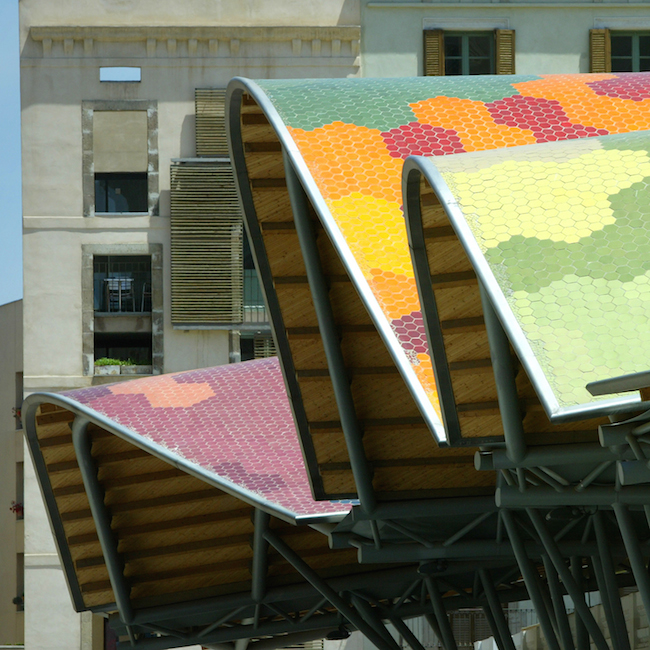The Santa Caterina market in Barcelona, Spain, stands proudly over the ruins of history. It rises above an old Roman necropolis, the ruins of a church that dates back to 1241 and the ruins of a monastery that was put to the torch by Catalan revolutionaries in 1835.
The bulk of the market’s undeniable presence in the storied space comes from its canopy, a gentle wave adorned with more than 325,000 multicolored tiles. The market was completed in 2005 by EMBT, the husband and wife team of Enric Miralles and Benedetta Tagliabue. The studio began the project in 1997, but Miralles never saw the market completed, he died in 2000.
The market itself dates back to 1844. EMBT wanted a renovated building that could be confident in its historic location. The architects state of the project:
“To repeat. To make it again. The project must not exist in a particular moment in time, but in inhabiting it.”
Guardian reporter Jonathan Glancey made no attempt to hide his jealousy in his review of the marketplace. He spends a few hundred words lusting after the theatrics of Barcelona’s markets, compared to the “morgue-like” supermarkets of his home country, chain stores he compares to a plague. He ascends from his miserable domestic shopping prospects as he dreams about the Santa Caterina’s roof.
“The answer was to house the whole market under an ambitious and eye-catching roof, to provide both generous and uninterrupted shelter and a colourful sense of identity and place. The billowing roof, hung with tiles from Seville, hangs from steel arches supported by a steel and timber frame. Although computer wizardry helped to generate the form and structure of the roof, individual laminated roof panels have been cut by hand; the sheer number of awkward curves in the design would have been, as yet, beyond the abilities of an automated, computer-linked timber mill. So, the building is both ultra-modern and very old in spirit and technique, recalling local boat-building techniques and seeming exactly right for its setting between two important medieval churches – the cathedral and the ship-like Santa Maria del Mar.”

The modern roof propels the ancient space forward in time, mirroring, in a way, the changes going on inside. In 2005 about a third of the merchants started taking orders via e-mail.
Love contemporary ceramic art + design? Let us know in the comments.




The Santa Caterina market by EMBT.

The historic ruins on the site of the marketplace.


Add your valued opinion to this post.